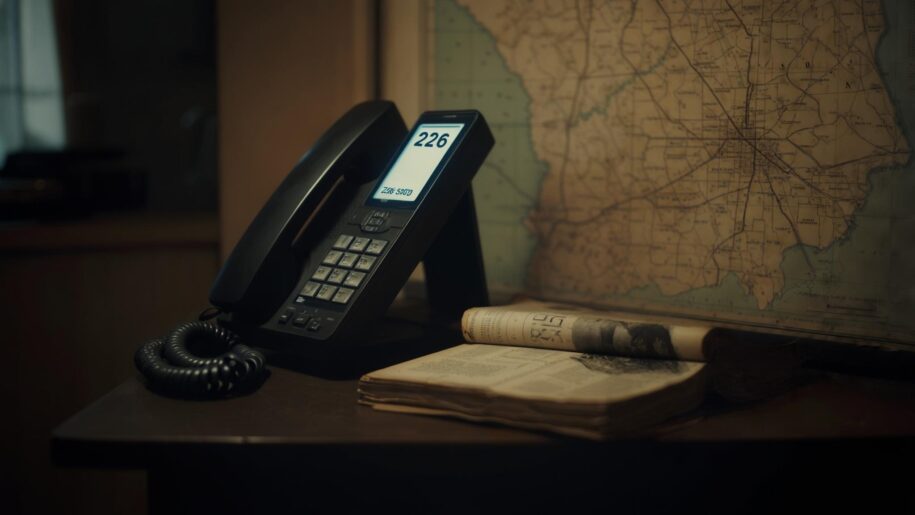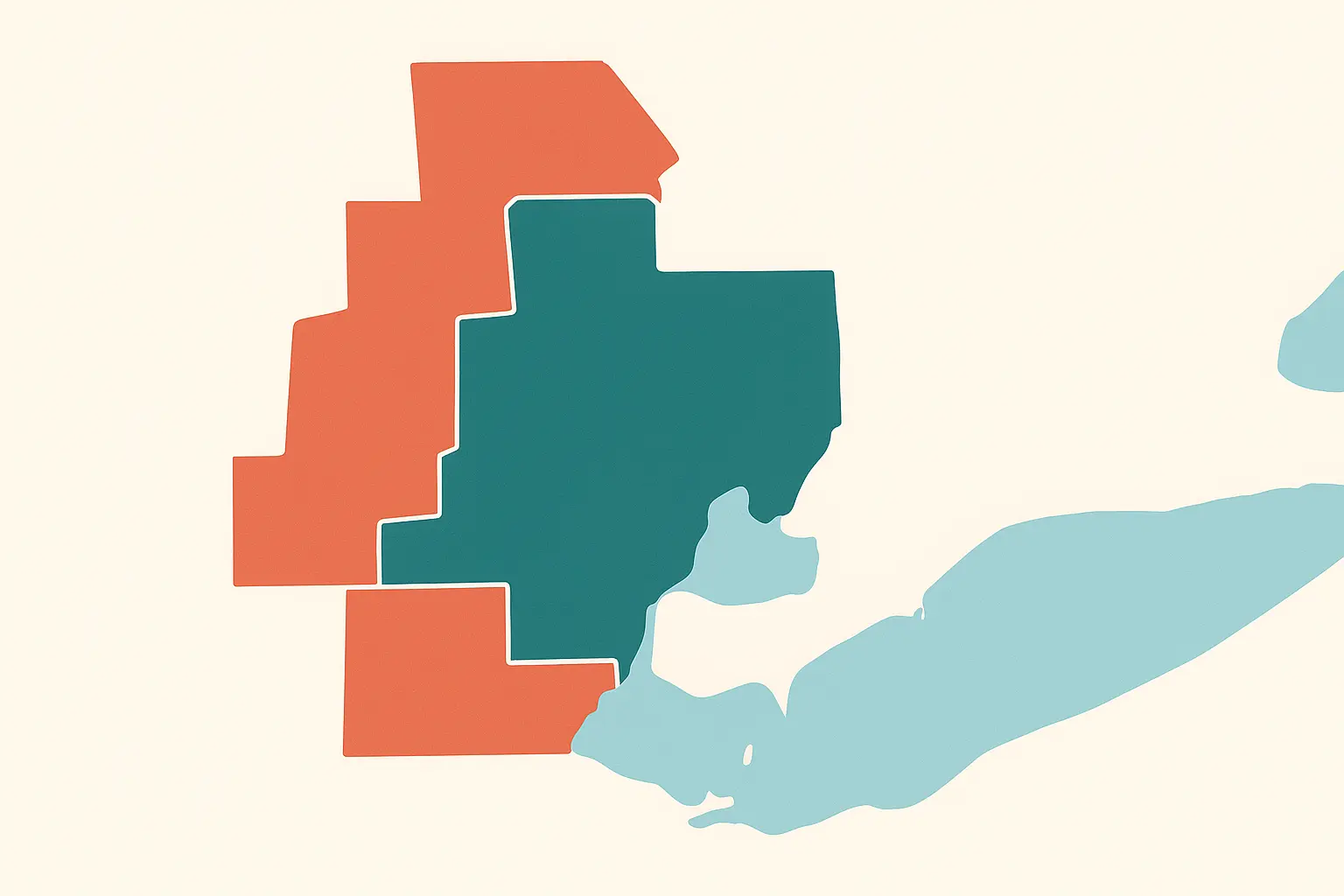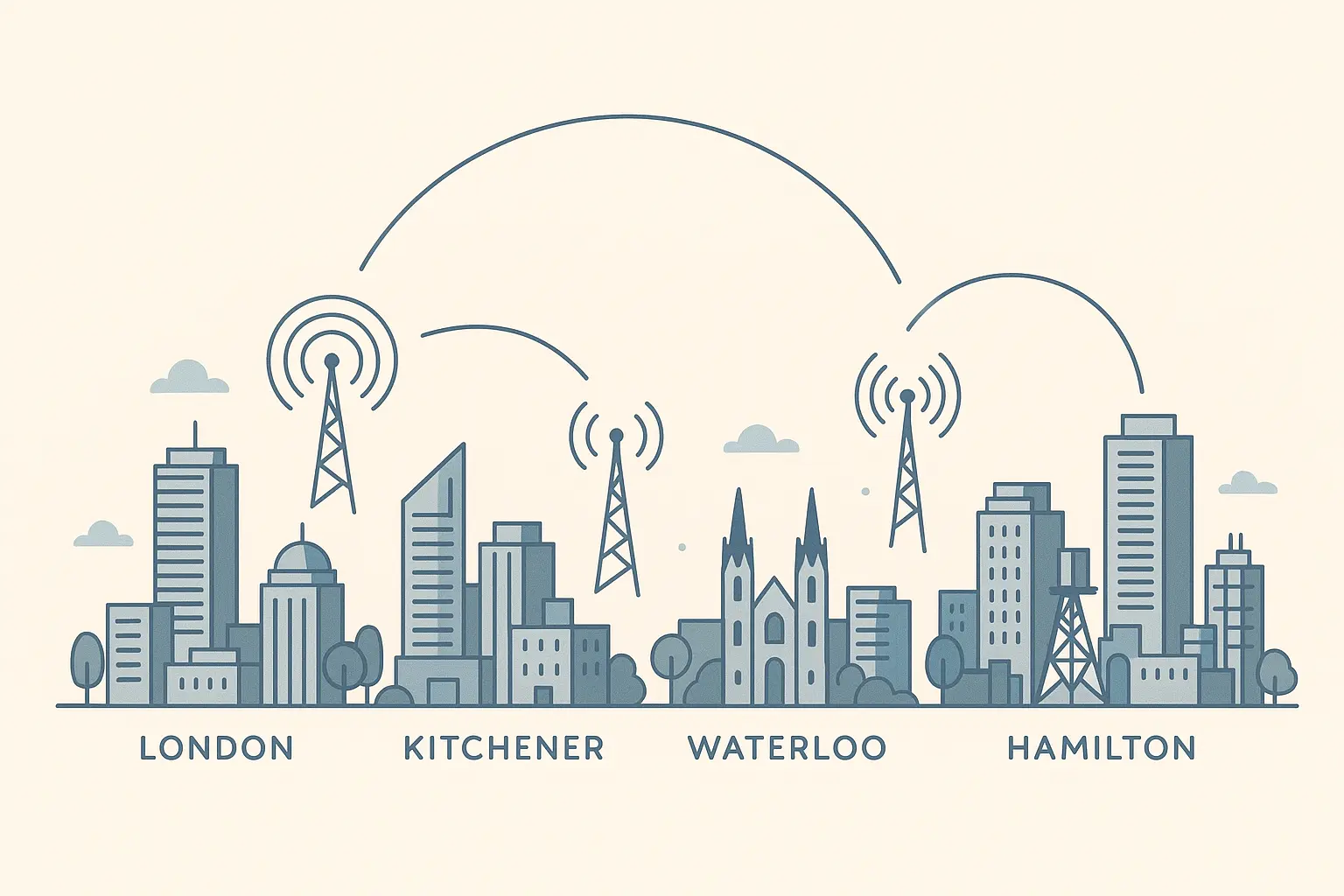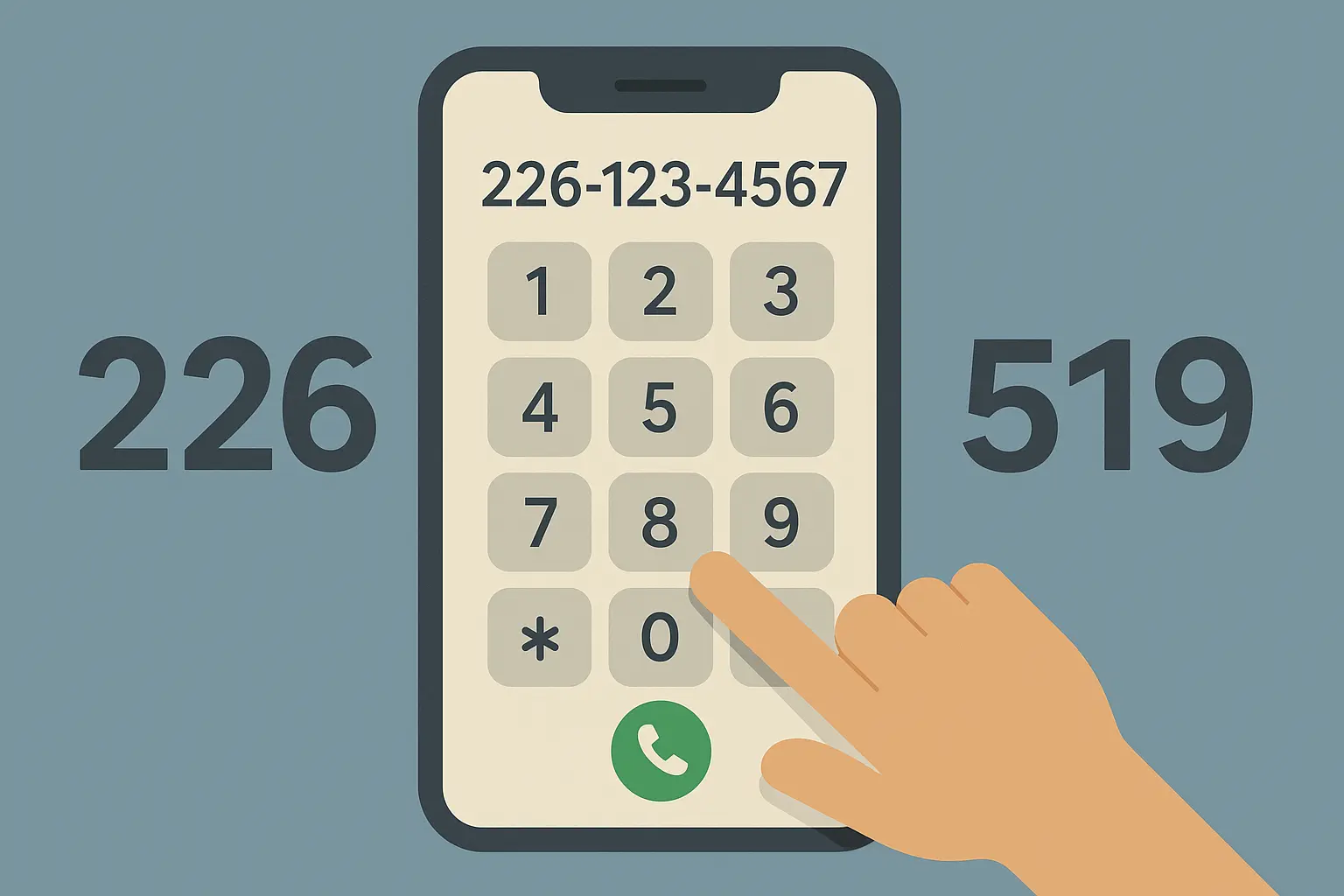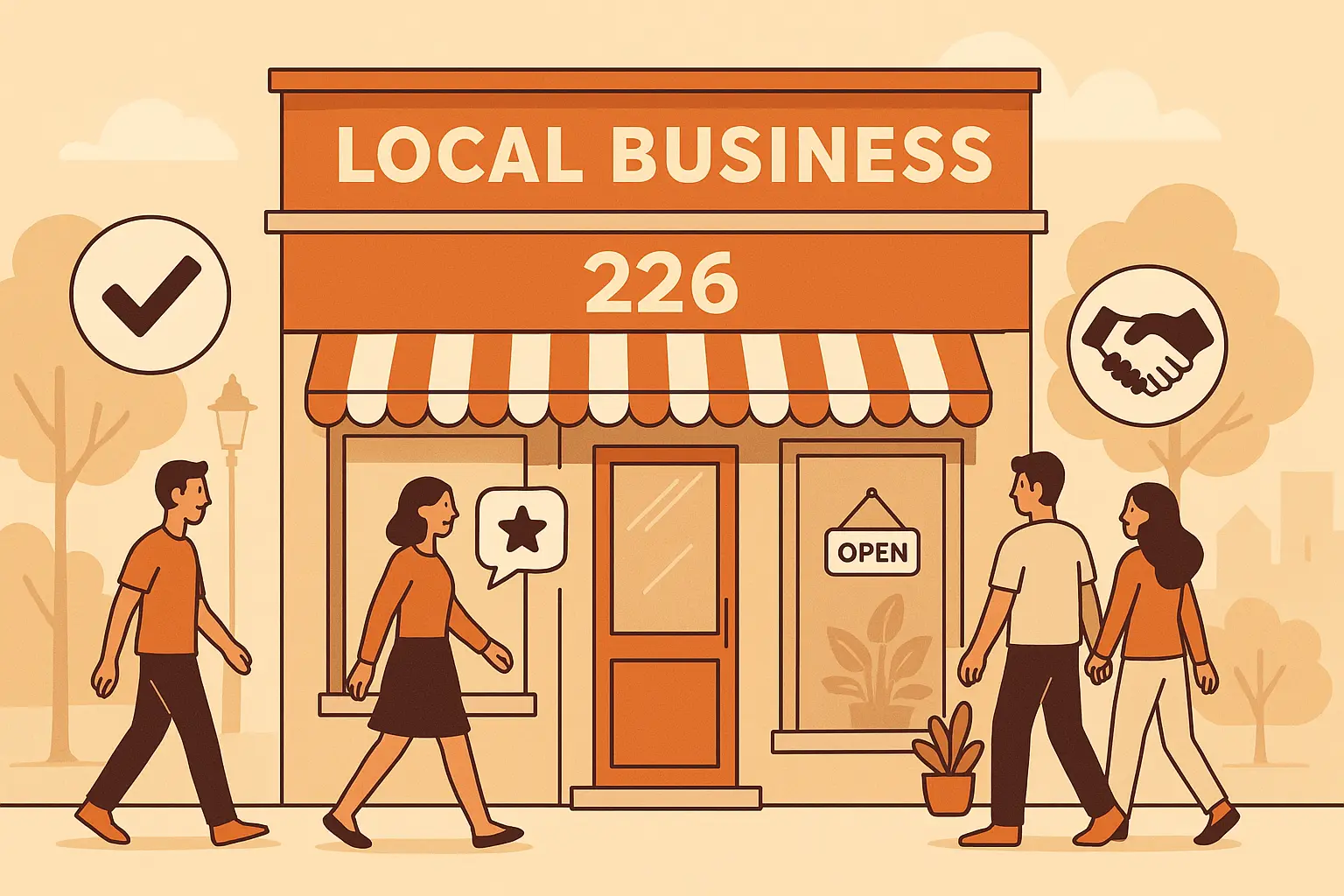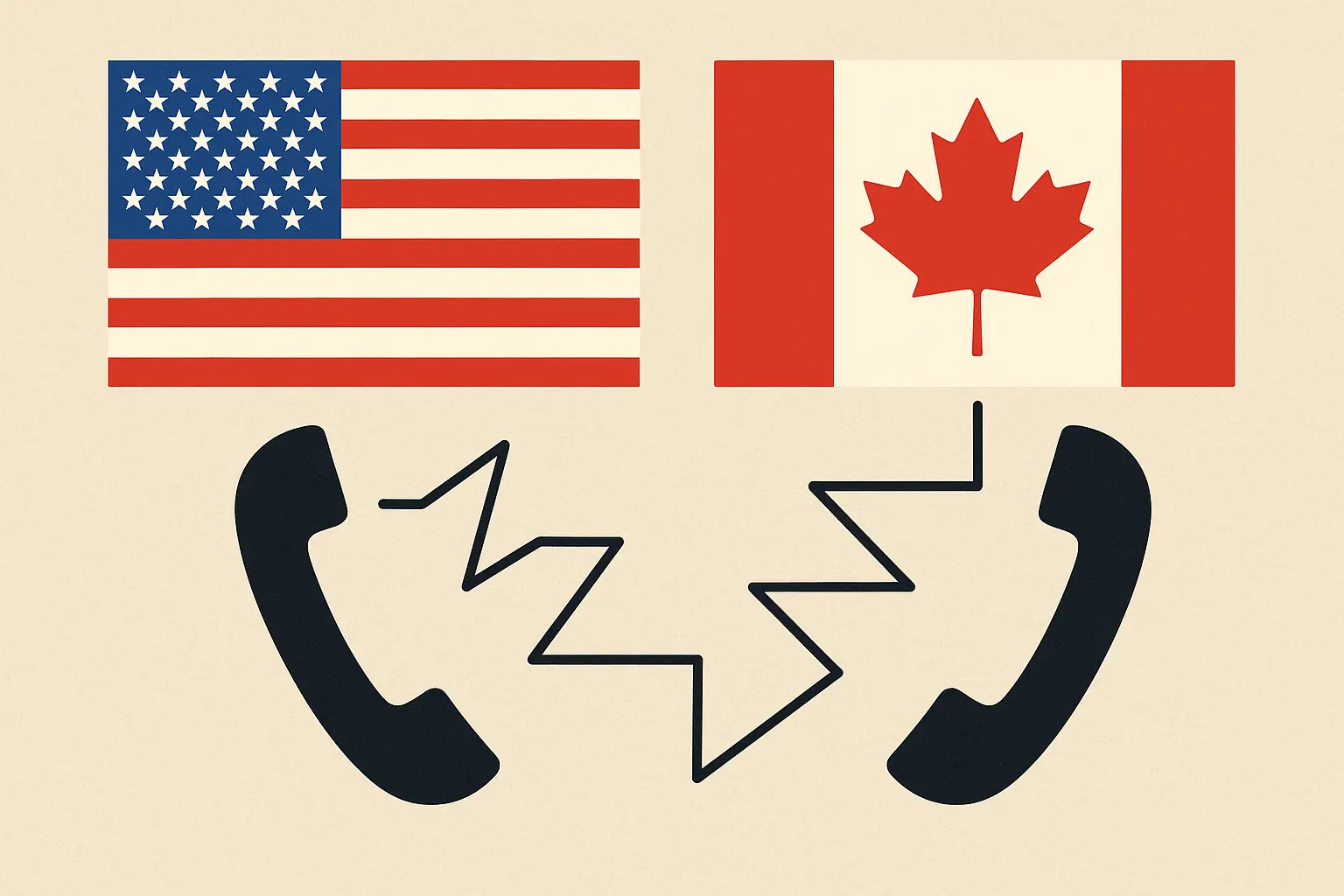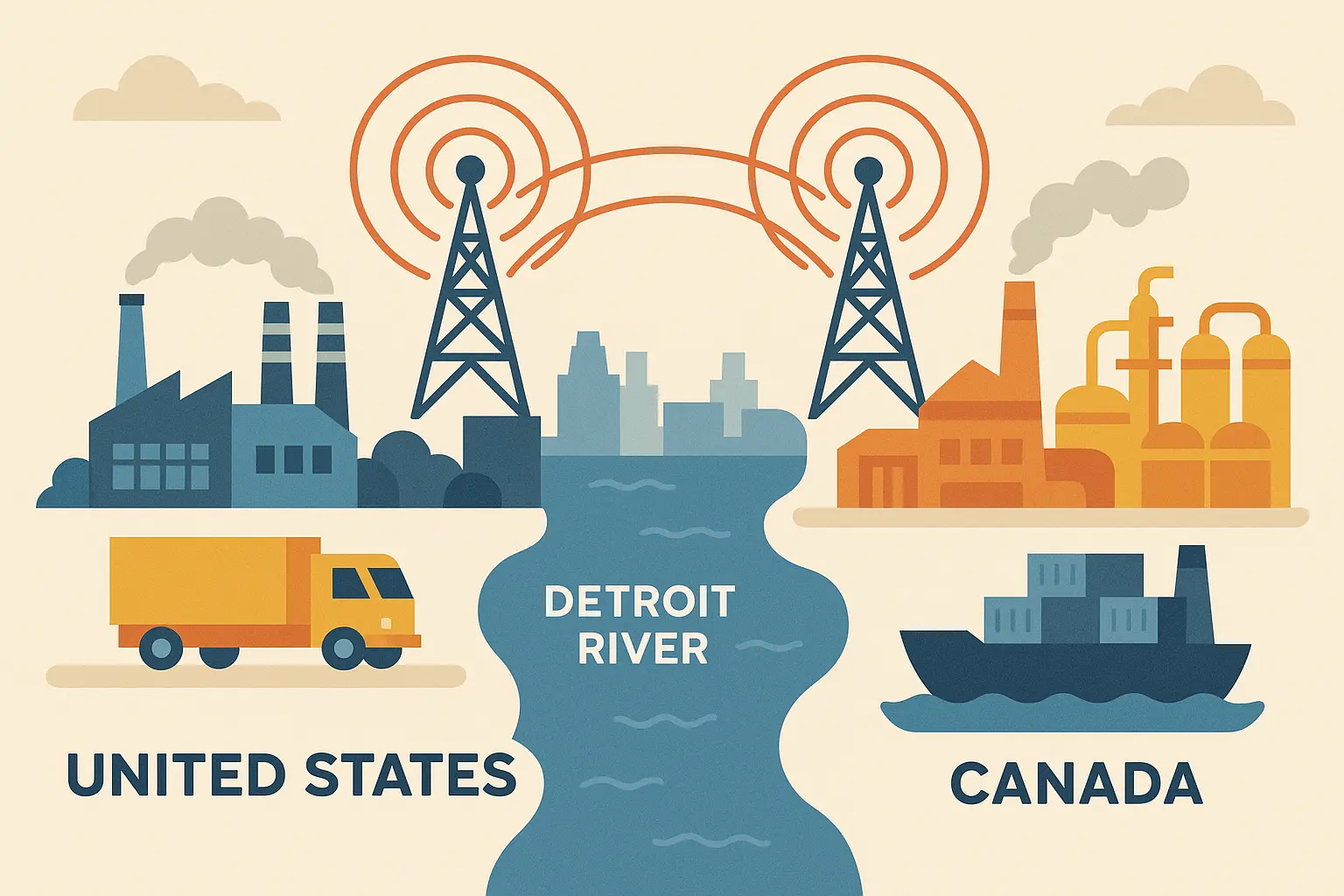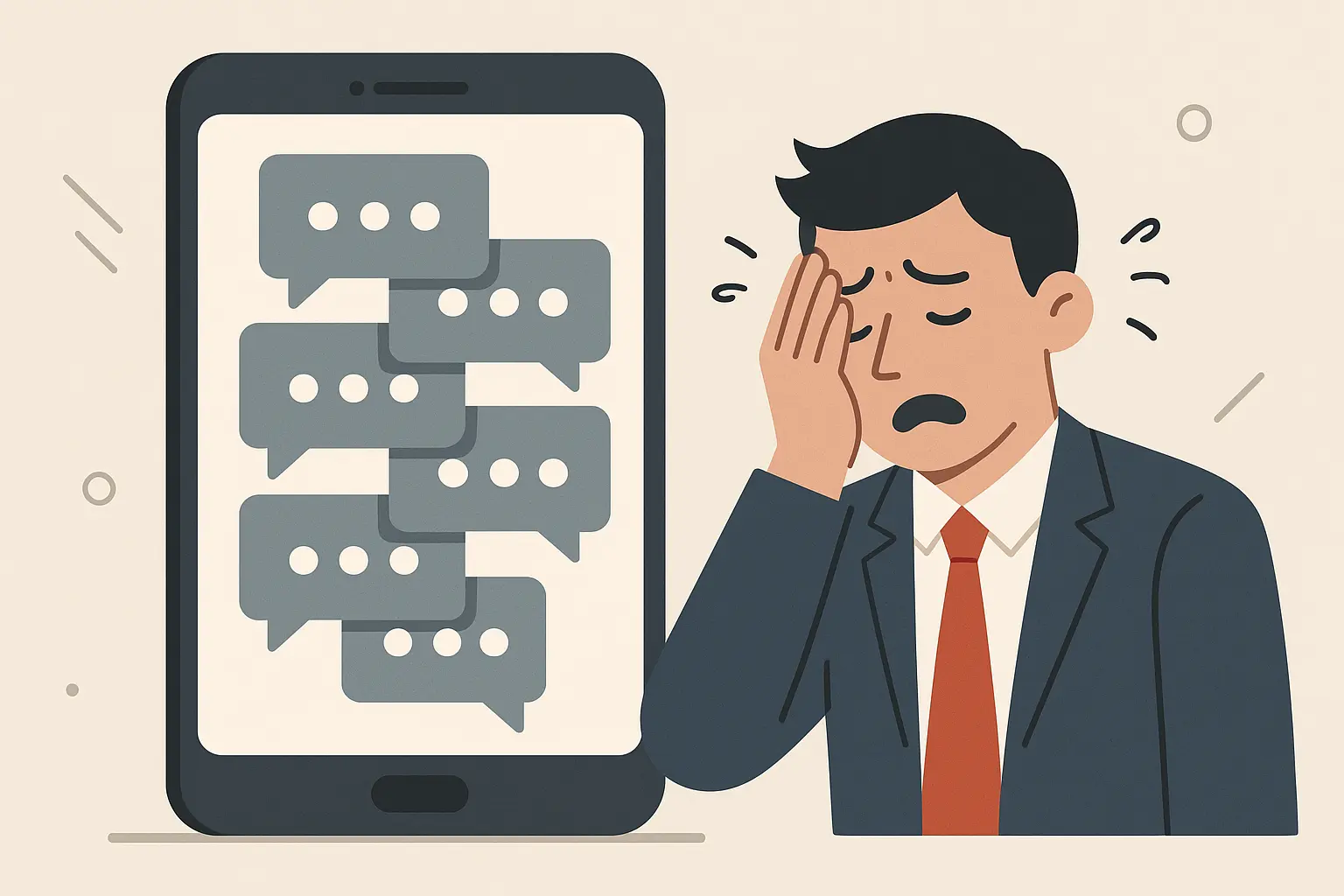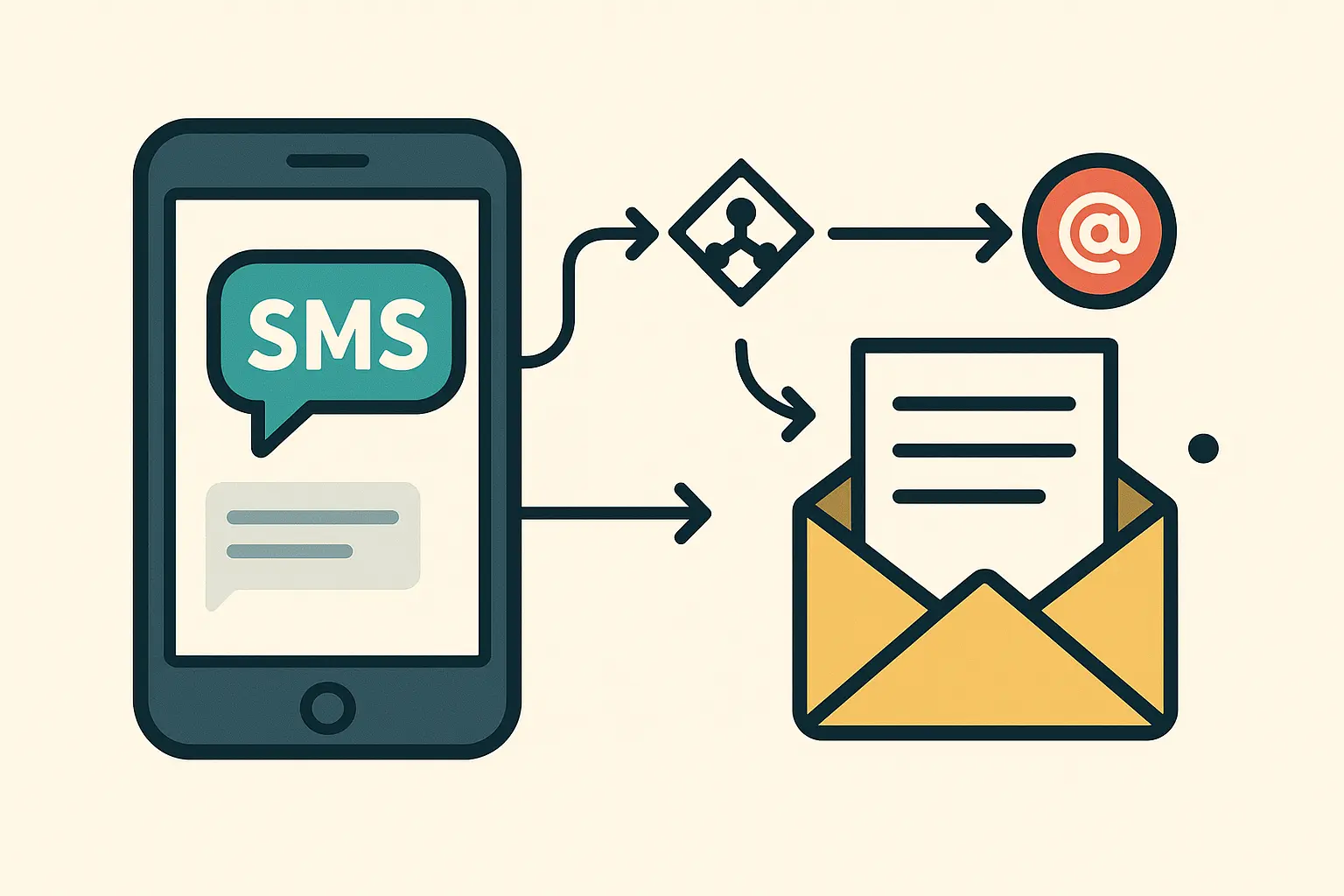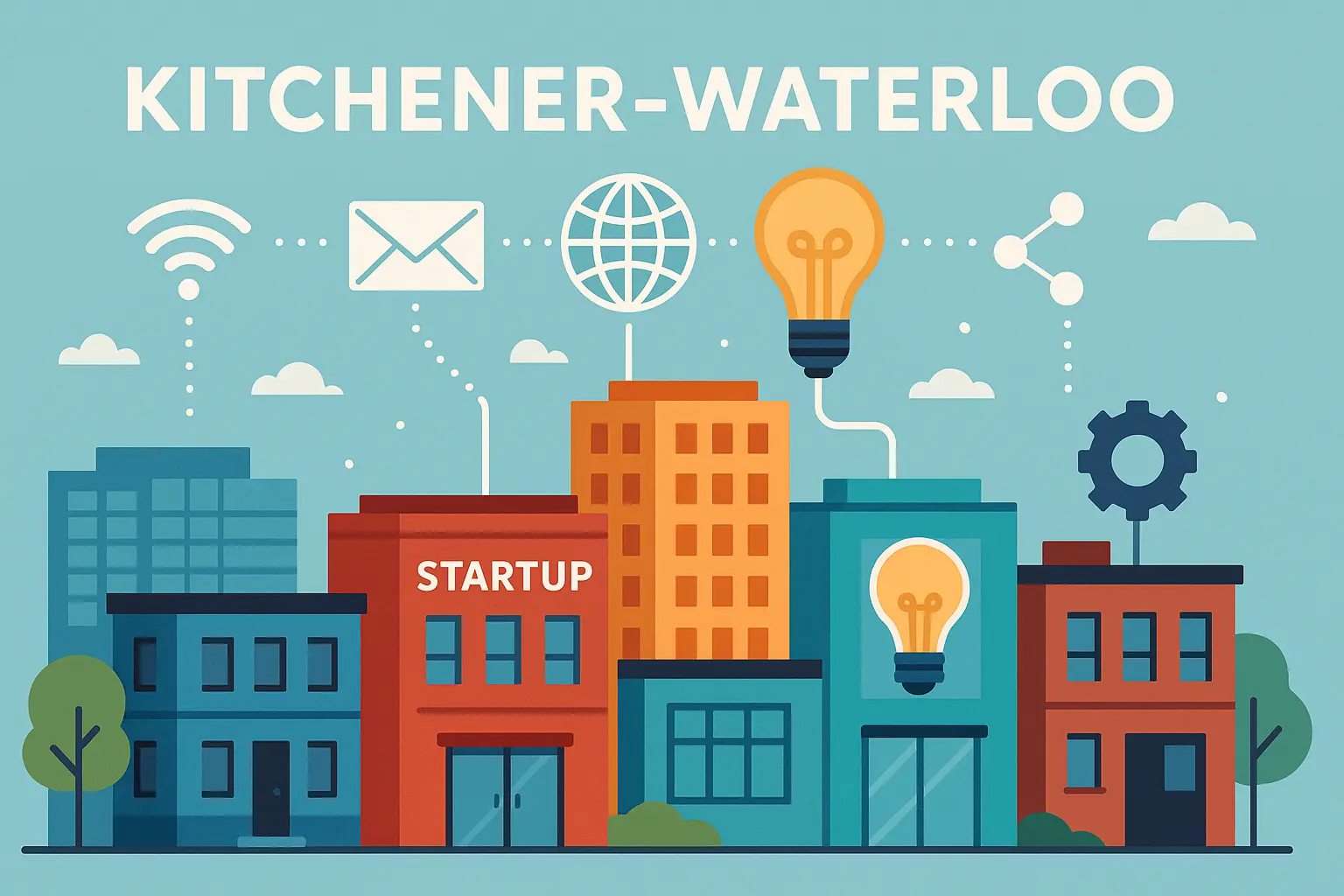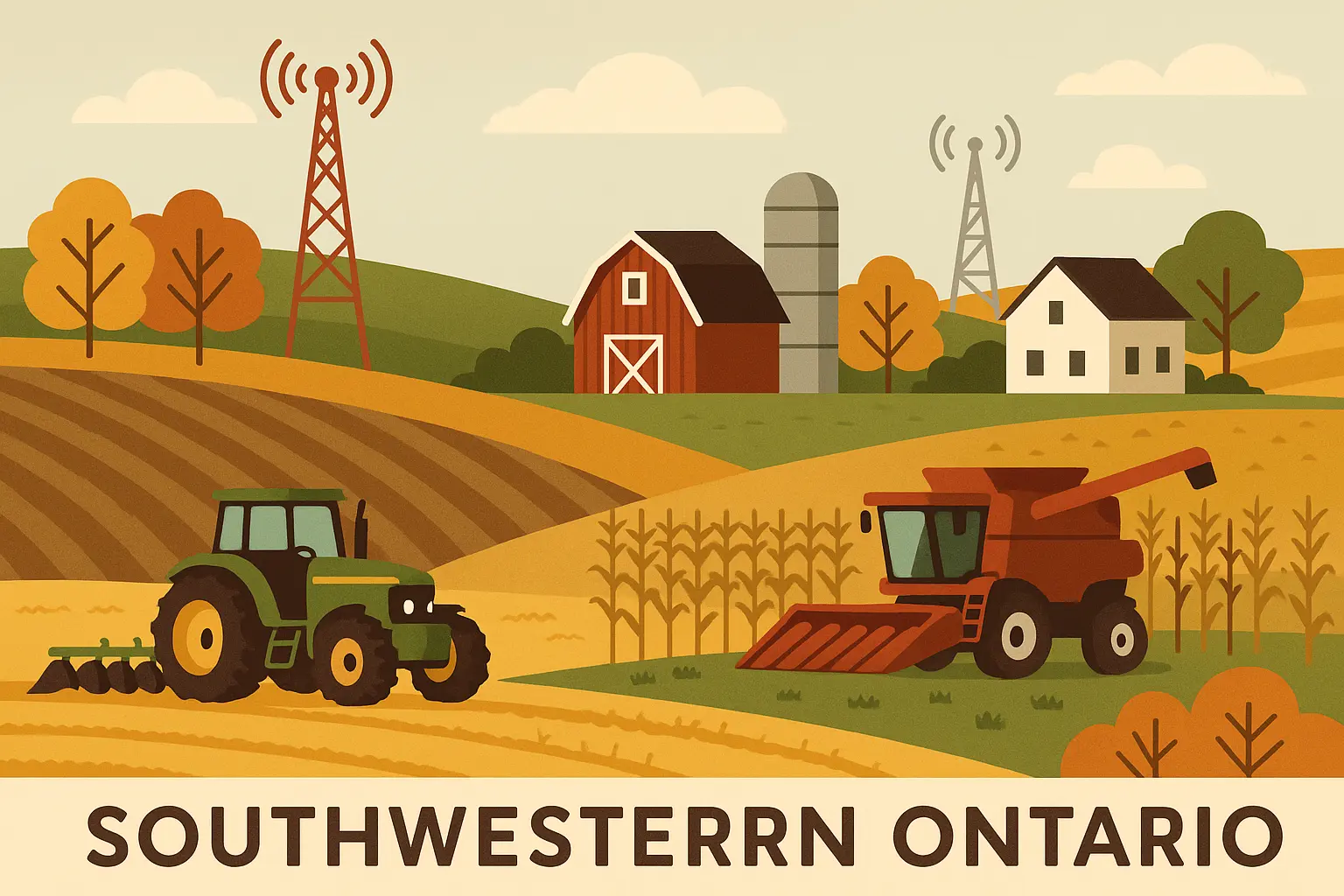Most people think area codes are just numbers. But if you’re doing business in southwestern Ontario, the 226 area code can actually make or break your customer relationships.
Here’s what caught me off guard when I moved my business here: you can’t just dial seven digits anymore, even to call your neighbor. And that’s just the beginning. With nearly 47 million phone numbers floating around North America’s system, according to NumberBarn’s marketplace data showing 46,772,555 phone numbers available across their network, understanding how your local system works gives you a real edge.
Table of Contents
Table of Contents
-
The 226 Basics: What You Need to Know Right Away
-
Why Every Call Needs 10 Digits (Even Local Ones)
-
How Smart Businesses Use 226 Numbers to Win Customers
-
Cross-Border Headaches and Simple Fixes
-
The SMS Problem That’s Costing You Money
-
Why This All Matters for Your Bottom Line
-
What to Do Next
TL;DR
-
226 covers the same southwestern Ontario area as 519 – they just added it on top in 2006
-
You must dial all 10 digits for every call, even to your next-door neighbor
-
Major cities include London, Windsor, Kitchener-Waterloo, Cambridge, Guelph, and Sarnia
-
Businesses near the US border deal with confusing international dialing issues
-
Missing text messages costs local businesses thousands in lost appointments and opportunities
-
The region runs everything from auto plants to tech startups, making reliable communication crucial
When 226 launched in 2006, it seemed like just another set of numbers. But it actually changed how every single phone call works here.
The 226 Basics: What You Need to Know Right Away
The 226 area code isn’t a separate region – it’s layered right on top of 519. Think of it like having two different postal codes for the same street. Both serve identical areas, but you need to know which one you’re calling.
How the Overlay Actually Works
Back in 2006, the phone companies faced a problem: 519 was running out of numbers. Instead of splitting communities apart (imagine London getting cut in half), they just added 226 on top. Smart move for keeping neighborhoods together, but it created the dialing mess we deal with today.
Here’s the weird part: two businesses on the same street might have completely different area codes. ABC Plumbing could have 519-555-1234 from 2005, while XYZ Electrical next door got 226-555-5678 in 2010. Same neighborhood, different codes.
The region keeps growing too. According to BlogTO, the Telecommunications Alliance announced that areas currently served by the area codes 226, 548 and 519 will have 382 available as well. That’s four different area codes for the same chunk of Ontario.
Where 226 Actually Covers
From Windsor’s auto plants to Kitchener-Waterloo’s tech scene, 226 serves one of Canada’s most diverse economic regions. London, Windsor, Kitchener-Waterloo, Cambridge, Guelph, Sarnia, Chatham, and Stratford anchor the urban areas, but the code also reaches rural farming communities where a missed call about weather conditions can cost thousands.
The Detroit-Windsor corridor creates unique challenges since you’re dealing with both Canadian and US systems. A Windsor auto parts supplier recently lost a $50,000 order because their US client couldn’t figure out how to call them back – turns out, the client was dialing like it was a domestic US number.
Why Every Call Needs 10 Digits (Even Local Ones)
This is where things get annoying. You can’t assume someone’s location based on their area code anymore, and you can’t dial just seven digits for anyone – not even your next-door neighbor.
Why Phone Systems Need All 10 Digits
Your phone system can’t read minds. When you dial 555-1234, it doesn’t know if you want the 226 version or the 519 version of that number. Without the area code, your call might reach the wrong person entirely.
This isn’t just inconvenient – it’s expensive. Businesses had to:
-
Reprogram every phone system and auto-dialer
-
Update all marketing materials and business cards
-
Retrain staff on dialing procedures
-
Fix customer databases to include area codes
-
Modify automated systems and voicemail prompts
The Time Zone Factor
Everything in the 226 region operates on Eastern Time, which matters more than you’d think. Companies calling from Vancouver need to account for that three-hour difference, or they’ll be waking up customers at 6 AM. I’ve seen businesses lose customers simply because they called at the wrong time.
For businesses handling international communications, understanding proper phone number formatting becomes crucial when dealing with cross-border clients and partners.
How Smart Businesses Use 226 Numbers to Win Customers
Here’s something most people miss: your area code is actually a marketing tool. Customers often prefer dealing with local businesses, and a 226 number immediately signals you’re part of the southwestern Ontario community.
Local Numbers Beat Toll-Free Every Time
A local HVAC company in Kitchener with a 226 number consistently wins bids against Toronto competitors with 416 numbers, even when pricing is similar. Customers assume the local company will show up faster and understand regional climate challenges.
Local numbers in your advertising generate higher response rates than toll-free numbers. Customers feel more comfortable calling a number they recognize as local, assuming they’ll reach someone who gets their specific needs and concerns.
Building Regional Credibility
Operating with a 226 number means your customer service team needs to understand Eastern Time business hours and local references. Customers expect local businesses to be available during standard regional hours and to know what they’re talking about when discussing local landmarks, weather patterns, or community events.
This local positioning becomes particularly valuable in service industries where personal relationships and community trust matter most. You’re not just another faceless company – you’re their neighbor.
Cross-Border Headaches and Simple Fixes
The 226 area code’s proximity to the US border creates communication challenges that other Canadian codes don’t face. Understanding international dialing procedures isn’t optional if you do business with American companies or customers.
The International Dialing Mess
Reaching 226 numbers from the United States requires international dialing (011-1-226) rather than simple long-distance dialing. This confuses US businesses and customers who aren’t familiar with the procedure, potentially costing you calls and business opportunities.
You also need to be aware of scam risks. According to WDAM News, “Ontario — 226, 249, 289, 343, 365, 416, 437, 519, 613, 647, 705, 807, and 905” are among the area codes that US residents should verify before responding to unexpected calls. This means your legitimate business calls might get ignored if you don’t establish trusted communication protocols.
Managing Business Relationships Across the Border
Companies in the Detroit-Windsor corridor must navigate both Canadian and US systems. This includes different business hour expectations, holiday schedules, and communication preferences on both sides of the border.
Manufacturing and trade businesses frequently communicate with US partners and customers. You need reliable systems that can handle international calls and ensure important messages don’t get lost due to technical complications. Always specify currency in your communications, maintain dual calendars for holidays, and provide clear dialing instructions to your US contacts.
The SMS Problem That’s Costing You Money
Text messaging has become crucial for business, but managing high volumes of SMS messages creates real problems for 226 users. Miss one appointment confirmation or customer complaint, and you’ve lost money.
When Missing Messages Costs Thousands
Businesses in the 226 region often receive dozens or hundreds of text messages daily. Customer inquiries, appointment confirmations, delivery notifications, and emergency communications all compete for attention. Missing important texts can cost you thousands in lost appointments, delayed responses to customer problems, or missed time-sensitive opportunities.
A contractor who misses a text about a job site change shows up at the wrong location. A restaurant that doesn’t see a large party cancellation still prepares for 20 people who won’t show. These aren’t small inconveniences – they’re expensive mistakes.
Remote Work Makes Everything Harder
Many 226 businesses operate with remote or mobile workforces. Field service technicians, sales representatives, and customer service agents need access to business text messages regardless of their location. But most business phone systems aren’t designed for this reality.
For businesses needing reliable message management, learning how to forward text messages to email ensures critical communications reach the right team members instantly.
The Auto Forward SMS Solution
Auto Forward SMS addresses these critical communication challenges that 226 users face daily. The service automatically forwards incoming text messages to designated email addresses or URL endpoints, ensuring important customer communications never get lost.
For businesses operating in southwestern Ontario’s competitive market, this reliability can make the difference between satisfied customers and lost opportunities. The filtering capabilities allow you to create specific forwarding rules based on sender numbers or keywords, making it particularly valuable for routing different types of messages to appropriate team members.
With pricing between $1.30 and $22.00 per month, Auto Forward SMS provides an affordable solution that helps 226 users maintain their competitive edge while ensuring no critical communication falls through the cracks.
New users can quickly implement these solutions by following our getting started guide to set up automated forwarding within minutes.
Why This All Matters for Your Bottom Line
The 226 area code serves one of Canada’s most economically important regions. From Kitchener-Waterloo’s tech companies to rural agricultural operations, reliable communications aren’t just convenient – they’re essential for staying competitive.
Tech Sector Demands
The Kitchener-Waterloo corridor has earned recognition as “Canada’s Silicon Valley,” with hundreds of tech startups and established companies choosing 226 numbers for their operations. According to historical data from Clerk Chat, the 226 area code was introduced in 1953 and has been serving the growing population and telecommunications needs of southwestern Ontario for over 70 years, demonstrating the region’s long-standing importance in Canada’s economic landscape.
Tech companies often require advanced messaging solutions, including API endpoint forwarding for integrating SMS communications with their existing software systems.
Agricultural Communications
Rural areas within the 226 coverage zone support significant agricultural operations that depend on reliable mobile communications. During peak seasons, missing a single text about weather conditions or equipment problems can impact an entire year’s income.
Rural businesses often struggle with device management issues, making it crucial to understand how to prevent apps from going to sleep to ensure continuous message forwarding during critical periods.
What to Do Next
The biggest secret about the 226 area code? Most businesses in southwestern Ontario still don’t realize their area code affects their bottom line. Now you do.
Understanding the 226 overlay system, the mandatory 10-digit dialing requirements, and the unique challenges of cross-border communications helps you make better decisions about your business communication strategy. Whether you’re managing a small local business or coordinating operations across multiple locations, these technical and practical considerations directly impact your daily operations.
Modern business communications extend far beyond simple phone calls. Text messaging has become a critical channel for customer service, appointment scheduling, and urgent notifications. For 226 users managing these complex communication needs, having reliable systems in place isn’t optional – it’s essential for maintaining the competitive edge that southwestern Ontario’s diverse economy demands.
The 226 area code represents more than just a set of numbers – it’s the communication backbone for one of Canada’s most economically vital regions. From the tech startups of Kitchener-Waterloo to the agricultural operations scattered across rural townships, businesses throughout southwestern Ontario depend on reliable communication systems to stay competitive and connected.
